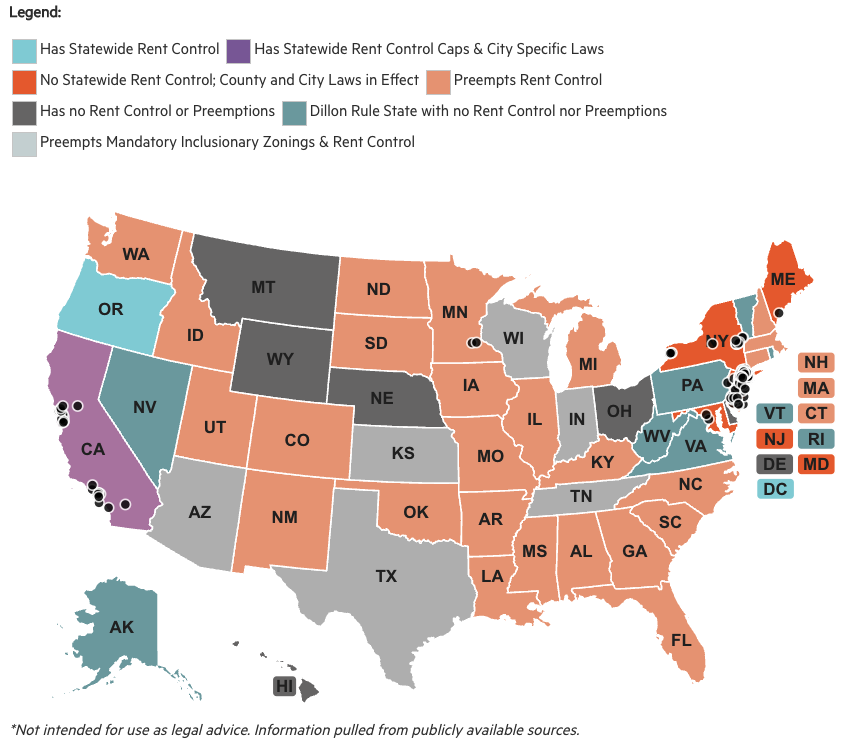12 min read
Beyond Traditional Loans: 14 Creative Financing Options for Real Estate Investing
Creative financing can offer real estate investors options beyond traditional lending from banks. If you have less-than-ideal credit or lack a sizeable...

According to Investopedia, a rent-controlled apartment is part of a government program that limits the amount that a landlord can raise the rent. Though these programs are executed by local municipalities and vary accordingly, most tenants who maintain occupancy in a rent-controlled apartment either inherited that unit from a family member or have lived there since the early to mid-1970s. Unsurprisingly, most tenants love being a part of a rent control program while landlords face unique challenges with these units since they must stay up to date on all related regulations to avoid breaking local and state laws.
This guide will help you understand how rent control works, who makes the rules, and the pros and cons of this type of investment.
Rent control works by having a government body set rules about how much rent can be raised in a given year for qualifying properties. Per Forbes, there are three types of rent control:
Typically, rent control is regulated by the state, though sometimes individual cities lead the charge. 37 states ban rent control outright, but 182 municipalities across the U.S. have rent-regulation rules – all of which are located in six places.
The six states and cities with existing rent-regulation programs include:

Before we dive into an overview of the rent control programs for each of the locations listed above, it’s important to note that each program outlines specific exemptions. In many states, newer units aren’t required to be rent-controlled. Additionally, if the property owner provides capital improvements to older properties, they may be exempt from the rent control program. With that in mind, let’s examine the various existing programs across the U.S.:
Per Investopedia, rent control tends to be more aggressive while rent stabilization focuses on more modest restraints. Rent stabilization is more common than rent control, particularly in places like New York. In fact, ”the 2021 NYC Housing and Vacancy Survey found that there were 16,400 rent-controlled apartments, compared to 1,048,860 rent-stabilized apartments in the city in that year. The authors of the Urban Institute study attribute this partly to provisions that require continuous occupancy and vacancy control in New York City.”

The market rate for rent-controlled and rent-stabilized apartments is typically determined by a rent guidelines board. NYC, New York State, and San Francisco have such a board to provide adaptive affordable housing.
In D.C., Takoma, and California, rent control is defined by state agencies as a pre-determined percentage and inflation according to the Consumer Price Index. The same is true in Newark, NJ. Oregon, as the only location with state-wide rent control, legislated its program through Senate Bill 608.
Rent control is an issue that waxes and wanes in popularity as economic opinions change. The reason rent control programs existed in a few cities before 2019 is because it has primarily been implemented in places where rent can skyrocket above affordability for those who live and work in downtown areas. At the same time, rent control is not a reflection of the free market and limits landlords’ ability to profit from their real estate investments – which in turn discourages ownership and management of rent-controlled buildings.
Let’s look at the pros and cons of rent-controlled apartments.
Renters enjoy:
Landlords enjoy:
Renters may dislike:
Landlords may dislike:
Are you considering purchasing an apartment building with rent-controlled units? If so, just remember that rent-controlled units present a unique business model and one that should be considered carefully based on your local laws and policies.
12 min read
Creative financing can offer real estate investors options beyond traditional lending from banks. If you have less-than-ideal credit or lack a sizeable...
11 min read
If you came here wondering how to write a lease agreement, look no further. Creating iron-clad rental contracts is essential for protecting the rights...
10 min read
Between the risks of running a business, a volatile and ever-changing real estate market, and the sometimes fickle attitudes of the renting...
Join the 700,000+ independent landlords who rely on TurboTenant to create welcoming rental experiences.
No tricks or trials to worry about. So what’s the harm? Try it today!
TurboTenant, Inc., © 2025
Created in Sunny Colorado